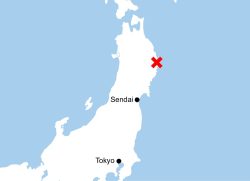Decline in Exports of Marine Products: Importance of Expanding Sales Channels Becomes Clear
17:07 JST, September 2, 2024
Japan’s exports of agricultural, forestry and fishery products and foodstuffs, which had been growing steadily, declined for the first time in four years in the first half of this year due to a drop in exports to China. The importance of diversifying sales channels must be reaffirmed and countermeasures pursued.
The value of Japanese exports of agricultural, forestry and fishery products and foodstuffs from January to June this year declined by 1.8% from the same period last year to ¥701.3 billion, the first drop since 2020. Marine products were notably sluggish, falling by 19.3% to ¥166.1 billion.
This is largely because China has suspended imports of Japanese marine products since last August in response to the release into the ocean of treated water from Tokyo Electric Power Company Holdings, Inc.’s Fukushima No. 1 nuclear power plant.
Scallops — for which China was the largest export destination — were hit particularly hard, with the export value falling by about 40% to ¥24 billion.
The government has set a target of increasing the export value to ¥2 trillion in 2025 and ¥5 trillion in 2030 as part of its growth strategy. Regarding full-year data, the latest results are disappointing because the figures had been climbing for 11 consecutive years until last year, thanks to the boom for Japanese food that served as a tailwind.
Even after the release of the treated water, many Chinese fishing vessels have been confirmed to be fishing for saury and other marine products in international waters around Japan. It is utterly incomprehensible why fish landed by Japanese fishing vessels cannot be shipped to the Chinese market.
The government should continue to strongly urge Beijing to lift the unjustified import ban.
China’s import ban can be said to have exposed the risk of depending heavily on a specific country or region for exports. This makes it important to expand sales channels.
Cooperation between the government and the fisheries industry has already been partially successful in cultivating new sales destinations for scallops.
The government has strengthened the system for exporting scallops from Japan to countries other than China, through such measures as providing subsidies for the installation of shelling equipment. As a result of these efforts, exports to the United States have increased by more than 60%, while those to Vietnam are a significant 7.9 times higher.
There are also plans to export scallops to Mexico, where the adductor muscle will be extracted and shipped to the United States as a luxury ingredient for sushi and sashimi, which are eaten raw. It is also ideal to proceed with the restructuring of the supply chain.
Japanese scallops have a reputation for high quality. Boosting overseas sales efforts probably provided an opportunity for people to rediscover the attractions of these products.
In addition to marine products, exports of many other goods are also growing steadily, such as rice and green tea. In addition to the United States and Europe, Southeast Asia and the Middle East among other regions with high growth potential can be promising markets. The number of overseas tourists is recovering in earnest, and it is important to take advantage of opportunities for visitors to Japan to experience Japanese cuisine up close.
Expanding sales channels from places such as Japanese restaurants to local restaurants and supermarkets would also be an effective measure.
(From The Yomiuri Shimbun, Sept. 2, 2024)
"Editorial & Columns" POPULAR ARTICLE
-

Artificial Intelligence Expands Possibilities for Foreign Language Learners
-

Build Intellectual, Physical Strength, As Well As Communicative Power / Japan Should Move from Beneficiary to Shaper of World Order
-

Global Economy in Turmoil: Prevent Free Trade System from Going Adrift / Risks to Financial Markets Must Be Heeded
-

Japan-China Strain Set to Persist as Beijing Officials Self-Interestedly Bash Tokyo; Takaichi Unlikely to Back Down
-

French and German Ambassadors to Japan Call for Democracies to Unite in Defense against Russian Disinformation
JN ACCESS RANKING
-

As Chinese Tourists Shun Japan, Hotels and Stores Suffer
-

Osaka-Kansai Expo’s Economic Impact Estimated at ¥3.6 Trillion, Takes Actual Visitor Numbers into Account
-

Japan Govt Adopts Measures to Curb Mega Solar Power Plant Projects Amid Environmental Concerns
-

BOJ Gov. Ueda: Highly Likely Mechanism for Rising Wages, Prices Will Be Maintained
-

Economic Security Panels Debate Supply Chains, Rare Earths; Participants Emphasize Importance of Cooperation Among Allies




















